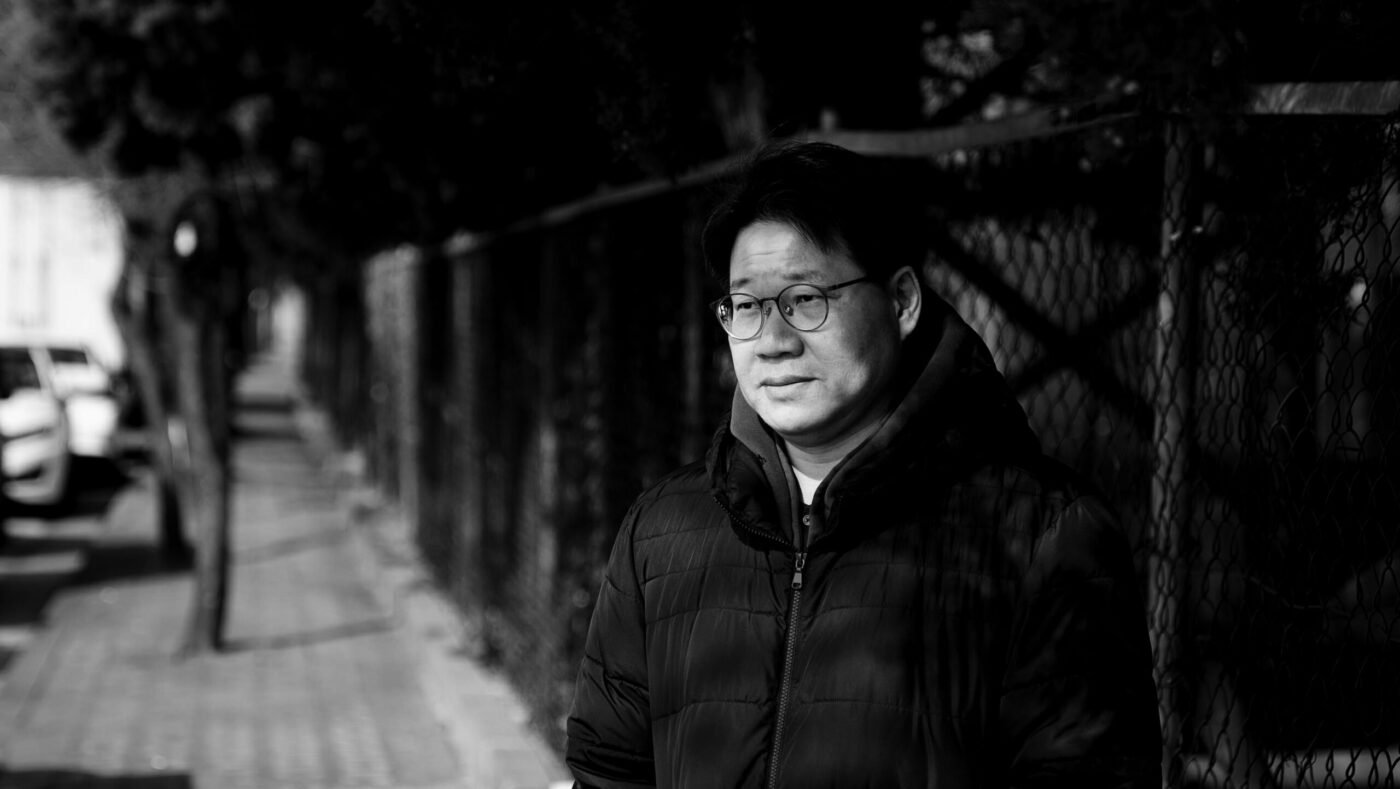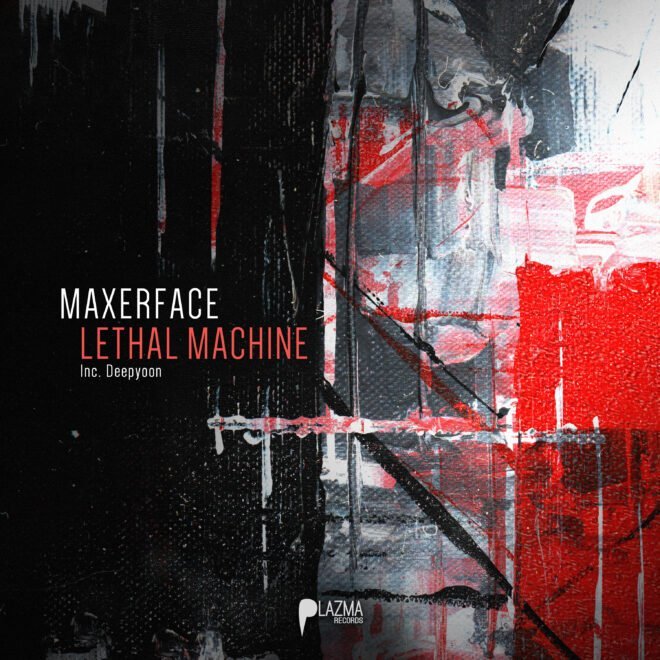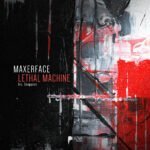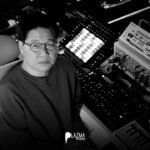You might have caught wind of him a few weeks ago when he dropped a stirring mix on Plazmatic Sessions. Now, with his debut EP “Lethal Machine” hitting the scene, it’s time to take a deeper swoop into this sound sorcerer.
Meet Maxerface, the disruptor shaking up South Korea’s electronic music scene. Coming from a land where ancient customs meet modern innovation, he brings a fresh twist to the global stage of techno. With a knack for pushing boundaries and an unstoppable creativity, Maxerface is a savant of sound engineering.
Maxerface’s journey began in the 1990s, tinkering with MIDI software and Akai samplers. Fast forward to today, and he’s at the forefront of music tech, leading the charge in revolutionizing production methods. It’s a true reflection of constantly evolving relationship between technology and music, and Maxerface is at the helm.
As a sound engineer, Maxerface is all about the details. His keen ear for sound design and mastery of the latest advancements allow him to craft immersive auditory experiences that are uniquely his own, whether he’s diving into techno, acid, or ambient.
But Maxerface’s road, like that of many creators, hasn’t been easy. He’s faced challenges, shaping his sound and pushing himself to new heights of creativity. Yet through it all, he remains dedicated to innovation and authenticity.
In our exclusive sit-down, we’ll navigate through Maxerface’s musical journey—uncovering hurdles, tracing influences, and charting his bold musical frontier. Hop on board for an insider’s peek into the mind of this sound maverick!
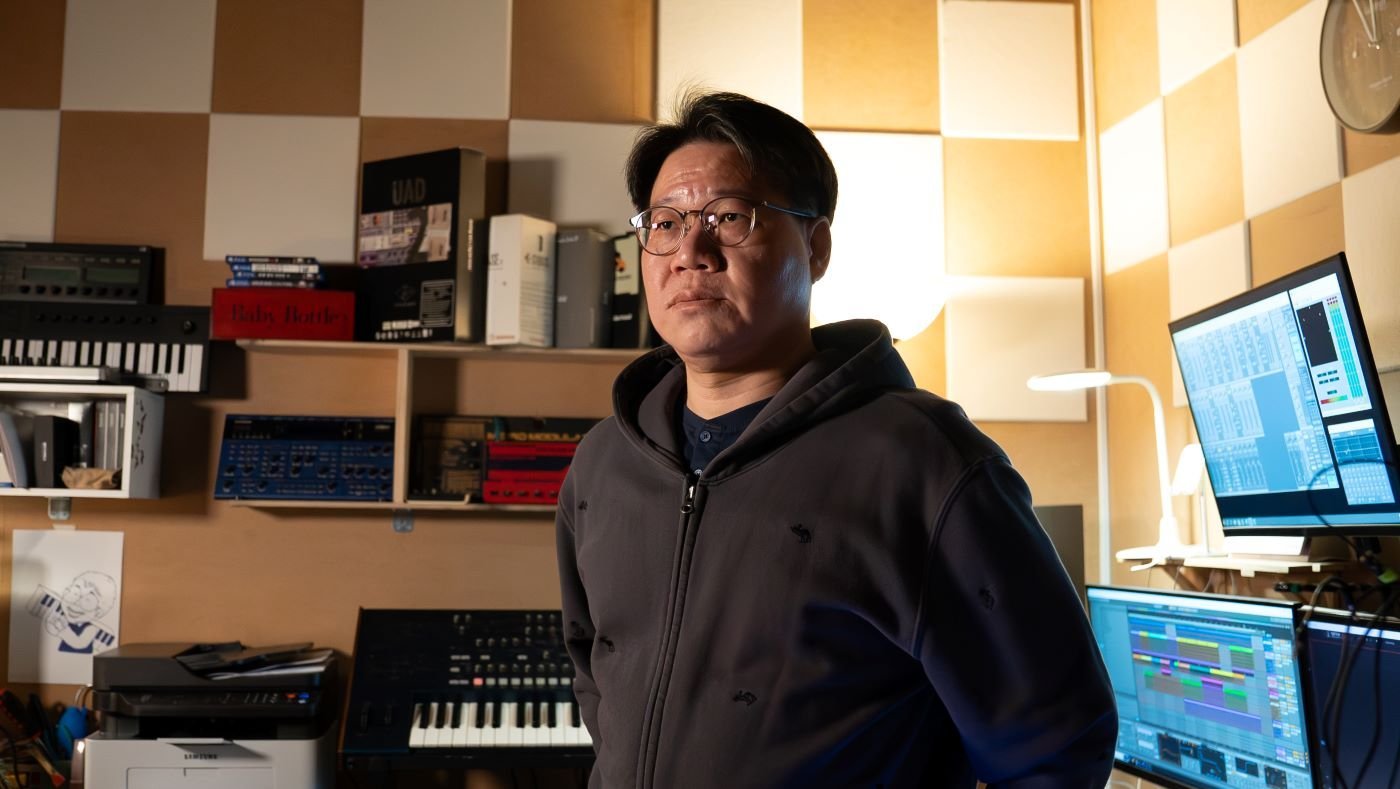
Firstly, what is your full name, age, and where are you from?
My name is Seung K. Oak. I’m 48 years old, and I’m from South Korea.
Is music production your sole occupation, or do you engage in another profession or career alongside it? Furthermore, how do you prefer to unwind and enjoy your free time outside of work commitments?
I am an electronic engineer and sound designer by profession. In addition to producing music, I embed sounds into various electronic products, automobiles, and smartphone applications. I manage a sound design company that conveys user sensibilities and product operating messages, aligning with each product’s concept by employing synthesizer techniques I learned while producing techno music.
Outside of work, I enjoy unwinding by collecting vinyl records from the 70s and 80s and listening to old music through my HI-FI system.
Can you share more about how your musical journey began in the early 1990s with MIDI software and an Akai sampler? What sparked your interest in music production, and techno in particular?
In the early 90s, I delved into computerized music inspired by European Rave and Euro NRG. Back then, the go-to method for producing music with just a computer and sound card was using sample-based software like Scream Tracker for DOS. As I became adept at working with sample sound sources, I ventured into MIDI music production, utilizing hardware like the AKAI S3000XL sampler and Cakewalk MIDI sequencing software.
However, the sampler’s capabilities limited my creative expression in techno music. In 1999, I ventured into music production with a synthesizer for the first time, using Propellerhead’s RB-338. This marked a significant shift as I could finally explore sound modulation and create original tones using synthesizers. It opened up a new world of possibilities, incomparable to the constraints of samplers.
The RB-338 offered the ideal tone and tools for producing acid techno. I was immediately captivated by acid techno’s robust sound and rhythm, leading me to naturally gravitate towards producing techno. To this day, I continue to explore various genres of electronic music.
While you’re known for techno, acid, and ambient music, do you have a desire to explore other genres in the future? Are there any specific genres or styles that you find intriguing?
I have experimented with various genres, but techno music remains my favorite by far. However, techno has become somewhat standardized. Attempting a new style of techno inappropriately may result in it no longer being recognized as part of the techno genre.
Recently, I’ve been exploring techno music with natural and aperiodic rhythms, such as those found in the movement of random objects or the sounds of nature itself. For instance, the rhythm and tone of raindrops vary depending on factors like the amount of rainwater and the material of the surface on which the rain falls. I’m utilizing the ever-changing sound patterns of raindrops as MIDI data and synthesizing new tones to create techno music.

What challenges did you face in the early years of your music production journey, and how did you overcome them?
While I listened to awesome techno music, I was incredibly curious about how they created those tones, but I didn’t have anyone to teach me. I had to figure everything out by myself. Learning on my own took a lot of time, trial, and error, so it was very difficult.
Producing techno music is akin to coding for a software engineer. Learning coding is challenging, but once you get the hang of it, you can create your own original creations in an infinite universe. You enjoy both the process and the results. After a long period of self-study and experience, I am now making music like a game programmer codes games, while enjoying the learning process. For me, there are no games in the world that are more enjoyable than making music.
As a sound engineer, how do you see the relationship between technology and sound design evolving in the electronic music scene, and how has this evolution influenced your own work?
The evolution of electronic music technology has progressed significantly over time and continues to do so. Recent advancements, particularly the integration of AI and music, represent a remarkable step forward. AI has enabled the implementation of musical technology that was previously unimaginable, thereby diminishing barriers to music production. In other words, AI technology now allows for the creation of music without the need for extensive knowledge and experience.
Specifically in techno, a genre characterized by standardized styles and repetitive patterns, AI deep learning has made it easier to experiment with new techno patterns that were previously nonexistent. Despite having produced established techno music for a considerable period, the advent of AI enables exploration of new concepts, narratives, and production techniques within the techno genre. However, maintaining authenticity within the techno genre amidst these developments remains challenging.
Who are some of your biggest artistic influences, both within and outside the music industry? How have they shaped your approach to creating music?
For a long time, East Asia hasn’t been the epicenter of techno. Satoshi Tomiie’s 1999 album, “Full-Lick,” gained worldwide fame and became a new success story for Asians. Recently, I’ve observed the progress of Asian techno while listening to Takaaki Itoh’s work.
Through them, I learned that Asian techno isn’t inherently special or undervalued. I became aware of the important fact that good music is evaluated solely by its sound on an equal basis.
The techno industry has experienced significant growth and changes over the years. From your perspective, how has the industry evolved, and what are some positive or negative aspects you’ve observed throughout your journey as an artist?
Technological advances, including various hardware and software, have created an environment where anyone can easily produce music using new production methods. Additionally, with the shift towards online streaming, it has become easier to both listen to and create music of our choosing.
While these platforms have helped discover many talented musicians, they’ve also facilitated the rise of less talented ones.
Can you share insights into the techno music scene in South Korea? How has the local scene shaped your artistic development, and are there any notable aspects that set it apart?
In Korea, K-POP is the most popular genre, so techno hasn’t gained as much traction yet. However, there’s been a recent trend of K-POP producers incorporating electronic or techno elements, which is a positive development for the genre’s popularity.
Many Korean DJs and underground techno musicians have seen significant growth in their careers since resuming their activities after the pandemic. Particularly noteworthy are concerts in Korea featuring joint lineups of K-pop and techno DJs. Observing the audience’s enthusiasm for each style provides valuable insights for me in various ways.

Walk us through your typical creative process when producing a new track. How do you start, and how do you know when a piece of music is complete?
Music is a means of expressing one’s story, and I utilize the language of techno to convey my message.
The key aspect is to establish a repetitive rhythm and hypnotic bass that harmonize seamlessly. Maintaining a focus on the fundamentals from start to finish ensures smooth transitions among all sounds and effects. The repetition continues until each sound has been sufficiently modulated, often leading to new ideas for the track’s development. Once these evolutions have been applied across the entirety of the piece, I consider it complete.
What are your go-to music production tools and instruments?
I mainly use Ableton Live’s built-in instruments and effects, and additionally Korg MS-2000, Arturia MicroFreak, Novation Peak, Roland TB-03, and a simple Eurorack modular synth.
If you could convey a specific message or feeling to your listeners through your music, what would it be? What do you hope people take away from the auditory landscapes you create in your work?
Among the various aesthetics of techno music, my favorite is hypnotic techno. Hypnotic techno serves as a powerful tool that enables people to escape reality and immerse themselves fully in the music. I aim for listeners to experience my music, replete with diverse themes, and allow them to feel true freedom away from their own reality, even if just for a while.
If your music were a visual art piece, what would it look like, and what emotions would it evoke?
My music is dark and deep. Darkness represents the most profound emotions. It sharpens our auditory senses. Immersing oneself in dark and deep sounds allows one to experience the true essence of the music.
Whether it’s remixes or original collaborations, how do you approach working with other artists? What do you value most in a collaborative process?
I prefer to exchange rhythms and basslines first, then add my own unique sound layers on top of them. As each layer is created, additional layers are continuously added and refined until the final selection is made.
While creating more layers, artists may sometimes deviate from the original sound, so it’s important to maintain consistency with the theme and concept throughout the process.
Your debut album at Plazma, “Lethal Machine”, is described as conveying the atmosphere of relentless machinery. Can you elaborate on the inspiration behind this concept?
The sounds of factory machinery and operations are repetitive and highly stimulating, much like techno music. Once, while listening to the sound of the laundry machine at home, I felt the rhythm of techno. I discovered a new groove from the pitch changes created by rotating objects and created a techno track by implementing it with a synthesizer. Furthermore, I produced a new track by recreating the sounds made by machines in a large factory. In the end, I ended up producing a track with the imagery of conflict between humans and machines.
Could you share insights into your current engagement as a DJ? How often do you find yourself behind the decks, and when you do, do you tend to focus on mixing a diverse range of tracks or primarily showcasing your own music?
Since transitioning from music production to DJing, it has been a new and distinct pleasure for me, quite different from the process of creating and enjoying music. Particularly invaluable is the experience of directly sensing the audience’s enthusiasm while performing on stage.
During the pandemic, I streamed all my performances, but to this day, I have yet to perform on stage. Prior to COVID-19, I used to perform on both large and small stages about 2-3 times a year.
While DJing, I rarely mix my own music. The reason is that there were many moments when my music was too deep and dark to produce a variety of moods. During my live performances, I exclusively use my own music. However, recently, for the Plazmatic Sessions, I’ve been incorporating a lot of my own tracks into the mixes, which is quite an exceptional case.
You mentioned using turntables, vinyl, and analog equipment in your home DJing setup. Can you share more about the specific equipment you find essential for your sessions, and how these choices contribute to the sound you aim to create?
Performing a turntable mix is a hands-on experience, contrasting with the programmed and produced nature of techno music. I’m fascinated by the immediate adjustments required for beat matching and pitch control, achieved solely through listening and tactile feedback as I manipulate the turntable platter with my fingertips.
The 2-channel mixer I use is a basic analog model equipped only with EQ and faders. There’s no need for digital effects or BPM detection. I prefer this setup as it allows me to mix based on the essence of the music, creating sessions with turntables and simple mixers.
By avoiding excess in the turntable mix, I can immerse myself more deeply in the music, rather than focusing on creating new sounds through DJing. DJing serves as an emotional warm-up before I dive into creating new music. This process often inspires various ideas and new sound tones.
How has your experience as a DJ, both in clubs and at home, influenced your approach to music production? Are there specific skills or insights gained from DJing that you bring into your work as a producer and sound designer?
Techno music thrives in the club environment. To evoke the same emotions and energy in listeners, techno must adhere to certain principles. DJs require exceptional control to escalate excitement to its peak and then bring it down appropriately. This understanding is only truly grasped through firsthand experience in DJing or being part of the scene.
In my sound design business, the primary focus is on creating warning sounds that alert product users to potential risks. Crafting these sounds to be stimulating enhances awareness, but overly intense tones can cause stress and negative perceptions of the product. There are guidelines for striking the right balance between cognitive awareness and user comfort, akin to how a DJ maintains control and balance during a performance.
While not actively DJing at the moment, do you have any plans or aspirations for future DJ performances? What conditions or opportunities might inspire you to step back into the DJ booth?
Of course. I have plans not only for DJ performances but also for live performances. Currently, Maxerface is a solo project, but I’m also part of a duo called Imperial Deep with my friend Deepyoon. Initially, I’ll focus on being a producer for both Maxerface and Imperial Deep. Once my career gains more public recognition, I plan to gradually resume performances.

Throughout your career, are there any particularly memorable moments or milestones that stand out to you? How did they impact your perspective on your own artistic journey?
There was a period during my music-making journey when I refrained from releasing records and performing for an extended period. As I delved deeper into sound research and experimentation, I gradually lost confidence in sharing my music with others.
In 2022, I regained my confidence and embarked on a new phase by streaming music on Beatport for the first time. Through continuous effort, I have now achieved the honor of being part of Plazma Records.
What advice would you give to aspiring musicians and producers who are just starting their journey in the music industry? What lessons have you learned along the way that you wish you knew when you started?
Creating your own music is the result of numerous trials and errors. Unless you’re a genius, making mistakes and accumulating experience over many years is essential. Take your time and don’t rush. If you have a goal, quietly work towards it.
Initially, I spent a lot of time emulating famous techno styles. I believed it was important to mimic others to develop skills. However, over time, I realized that creating my own music to convey my own story was most important. Techno, in my opinion, is the ideal medium for expressing abstract emotions and complex narratives in depth.
How do you see your personal sound evolving and progressing in the future? Additionally, what are your aspirations and objectives as a music producer, looking ahead?
In a world where advanced technologies easily analyze and replicate existing sounds using AI, an artist’s skill lies in creating unique originals independently.
With a vast array of synthesizers and tools available for making techno music, my goal is to continually experiment with diverse sounds. This involves modulating input variables and processing variables themselves creatively, rather than relying solely on simple input modulation, and integrating them into techno music in innovative ways.
Are there any upcoming projects or collaborations that you’re excited about and would like to share with your fans and the audience?
The process of creating sound with electronic instruments or software involves numerous high-level mathematical computations. Many people may not grasp this concept or find enjoyment in learning it. However, this process is crucial and constitutes a fascinating aspect of being an electronic engineer.
I’m currently working on a project to depict sound creation, manipulation, and modulation through techno music. My aim is to simplify the technical aspects of sound and generate more interest in the field.
